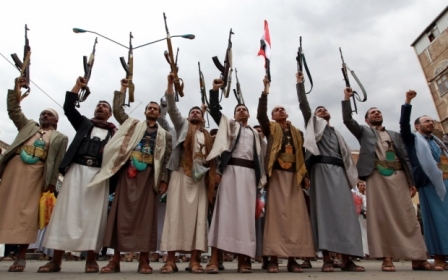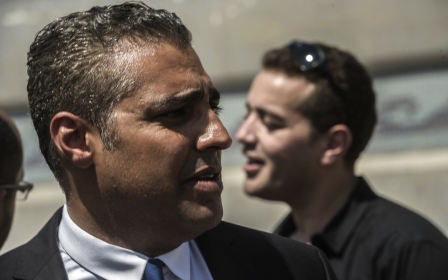Three Spanish journalists kidnapped in Syria freed

Three Spanish journalists kidnapped in Syria some 10 months ago were freed Saturday and are due to fly home from Turkey, the Spanish Press Federation and the government said.
The trio, who had been working for various Spanish media around the time of their disappearance, were last seen in July 2015 in the northwestern city of Aleppo where they had been reporting on fighting.
"All three have been released, Antonio Pampliega, Jose Manuel Lopez and Angel Sastre, and are on their way [to Spain]," said Elsa Gonzalez, president of the Spanish Press Federation (FAPE).
A source close to the Spanish government told AFP that the men were in Turkey waiting for their flight back to Spain. "They are in Turkey and are expected to return home on Sunday morning," the source said.
"All three are well," a government spokeswoman said, adding that Spain's Deputy Prime Minister Soraya Saenz de Santamaria had spoken to the men earlier Saturday.
It is not yet clear who kidnapped the three, the BBC said. Parts of Aleppo are controlled by rebel groups including the Islamic State (IS) group, who have kidnapped and killed journalists in the past.
Their release had been "possible thanks to the collaboration of allies and friends,especially in the final phase from Turkey and Qatar," the government said in a statement.
FAPE's Gonzalez spoke to AFP of her "joy" over the freeing of the journalists. She said they were "in a safe place" and would be landing at an air base on the outskirts of Madrid on Sunday.
She declined to give any details about the kidnappers.
According to the Syrian Observatory for Human Rights monitoring group, the three reporters were last seen in a rebel-held area of Aleppo on 13 July, 2015, when they were travelling in a van together before being taken away by armed men.
After they disappeared, Spanish Foreign Minister Jose Manuel Garcia-Margallo said officials were working with members of Spain's National Intelligence Centre who were in Syria to try and secure their release.
Most dangerous country for journalists
The three freed Spaniards are all experienced conflict zone reporters.
Pampliega, a freelance war correspondent born in 1982, contributed to AFP's text coverage of the civil war in Syria for a period up to 2013.
A reporter who tended to focus on human interest stories, he also contributed to AFP's coverage in Iraq.
Lopez, born in 1971, is a prize-winning photographer who contributed images to AFP from several war zones, including from the Syrian conflict up until 2013 and Iraq in 2014.
Sastre, 35, has worked in trouble spots around the world, including Syria, for Spanish television, radio and press.
Media rights group Reporters Without Borders in 2015 ranked Syria as the most dangerous country for journalists along with Iraq.
It says 10 journalists died in 2015 in Syria, where various armed factions are battling President Bashar Al-Assad's regime and each other.
The release of the three follows the freeing in 2013 of three other Spanish journalists.
El Mundo correspondent Javier Espinosa, freelance photographer Ricardo Garcia Vilanova and Marc Marginedas of El Periodico newspaper were all released after being seized by the Islamic State group.
In August 2014, the group decapitated US journalist James Foley, who was seized in northern Syria in 2012.
The following month, the group murdered fellow US journalist Steven Sotloff.
In 2015, militants from the group beheaded Japanese war correspondent Kenji Goto.
Last month a video emerged of another Japanese journalist, Jumpei Yasuda, apparently asking for Tokyo's help in securing his release.
A British journalist, John Cantlie, who was kidnapped alongside James Foley, has appeared in a series of propaganda videos released by IS, in which he speaks to the camera in the style of a news report.
Middle East Eye propose une couverture et une analyse indépendantes et incomparables du Moyen-Orient, de l’Afrique du Nord et d’autres régions du monde. Pour en savoir plus sur la reprise de ce contenu et les frais qui s’appliquent, veuillez remplir ce formulaire [en anglais]. Pour en savoir plus sur MEE, cliquez ici [en anglais].




